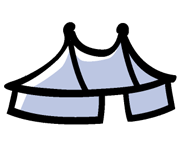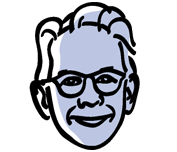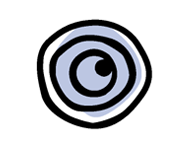La Croix12 April 2017
The acrobatic existence of the Cirque Plume performers
Didier Méreuze
From Valérie, the contorsionist, to Jean-Marie, the magician, not forgetting Jacques on his velociped, the Cirque Plume delights and amazes one and all.
In the Parc de La Villette in Paris you have the Géode and the Cité de la Science. You have the gigantic "dragon" where children get lost under the watchful and sentimental eye of their parents. You have the avenues where you can take a walk or cycle, alone or with the family. And then, there beside the canal, you have the twin yellow big tops surrounded by caravans and articulated lorries, where every evening hundreds of spectators, children along with parents, come to be delighted and enchanted. This is the Cirque Plume.
A "new style circus" as they say. A genuine "tribe" also, as the director Bernard Kudlak points out, a tribe of about thirty or so souls - out of the fifty which make up the Cirque Plume in Besançon, its home town. With its two cooks who prepare forty meals at midday and as many in the evening ("there are always guests !"), its two nannies who look after the toddlers, its four stage hands and three light and sound men who have to regulate everything before each performance ("with the wind they’re always in need of adjustment !"). With those who run the bar, the maintainance staff, and, of course, the performers - a dozen jugglers, clowns musicians and acrobats...
No lions or other animals here. No one born with grease-paint and sawdust in their hair. But men and women coming from a great variety of backgrounds to merge into this "world apart where you can live apart" as declares Jacques, specialist on the bicyle with or without a trampoline, just two years out of school, the Ecole Supérieure des Arts du Cirque. A world that looks like a village with its own laws and its own organization. A world born under two stars - show business and the nomadic life.
Everyone has a task
The show, recalls Bernard Kudlak, "is what the whole day is geared towards", from warm-ups around 9.30 to 10.00 until the last adjustments, final touches and rehearsals which continue right up to the moment when it’s time to get the big top ready to welcome the spectators. Everyone has a task. The time when everyone had to turn their hand to everything is now far off - mounting the tent, cooking, washing-up and that sort of thing. "One day, explains Michèle, co-founder of the circus, we noticed that it wasn’t possible to play musical instruments in the show after having mounted the big top. You lose all your dexterity, your joints don’t respond. We had to choose..."
They travel by road. Everyone pulling their own caravan. The days of the mythic convoy are over. "In the past says Bernard Kudlak, it was a way of advertising your presence. And the stages were short - 30 kilometres at the most...
Now we run from one end of France to the other, we go abroad. One year we did Nantes, Lisbon, Stockholm, Maastricht one right after the other." When you realize that the Cirque Plume has 25 caravans and 8 heavy lorries, you get an idea of just what that means ! "It would be too dangerous. All the more so, because car drivers don’t very much like to see us on the road. And then, in general, people are not so trusting. It’s the old fear of the chicken thief..." Without a doubt, they could all book in at a hotel, but "c’est l’horreur!" breaks in Michéle. "It’s cold, depressing and impersonal..."
"It’s all a question of organization"
Self-taught and a late-comer to the performing arts, she admits that nothing had predestined her for this life. But now she wouldn’t change it for anything in the world. "Or, she adds, I would even be ready to leave the circus, the caravan is her "home". She has her books there, its cozy. She can go in and close the door or keep open house. It’s only the surroundings outside that change...
"When you have children it’s great. You’re with them all the time. You don’t have to get them up to take them to the kindergarten or hurry them along to go shopping on a Saturday. They have their playmates : the other circus kids."
There are six children. All are very small like Michèle’s. What will happen when they get to school age ? She doesn’t have any worries about that. "We can employ a qualified nanny or have an assigned primary school teacher which we will pay for together..." Or yet again, ask a member of the circus to take on this role, just like a technician who, a few years ago, in liaison with a teacher in Besançon took care of a child of early primary school age.
"He discovered his vocation, reveals Michèle. He went on to become a primary school teacher..." In fact, "it’s all a question of organization", as she says. With as first and foremost a preoccupation for conserving an art of living which closely combines work and everyday life in the conviviality of a dream of a utopian republic. A dream which draws Valérie, the contorsionist, to sleep in her caravan every night, while she has a pied-à-terre in Paris. "Since we’ve been here at la Villette, she says, I’ve only been there once ! I’m at home here !"
Didier Méreuze
Parc de la Villette in Paris 01.40.03.75.75.
Photo : Valérie Dubourg and Jacques Schneider - a passion for the ring with its stunts and tumbles.
A new concept in circus acts
Founded in Besançon, the Cirque Plume is one of the pioneers in the "new circus" genre which prefers poetry to sequins, the gracefulness of the human to animals monkeying humans, beautiful stories in the big top rather than just a simple series of individual acts... "L’harmonie est-elle municipale ?" its latest creation, bears this out. It is also its most beautiful. On the unique theme of the relationships which unite men and women, this cunningly feminist show, put together by Bernard Kudlak, blends humour and gentle irony carried along by a happy band of top level performer-musicians. From Valérie, the contorsionist, to Jean-Marie, the magician, not forgetting Jacques on his velociped, dishevelled hair and bushy beard, taming bicycles like others train horses, it is a veritable anthology to delight and amaze one and all. Theatricals, dance, pantomime, puppets are all part of the show. But the greatest hommage is paid quite simply to the circus in itself with the fleeting movement of a traditional clown’s costume as it flies heavenward...









